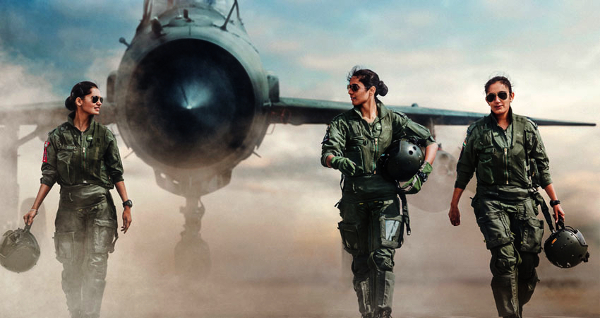What began as a five-year experiment to allow women to fly fighter jets in the Indian Air Force could now see them serve longer in the demanding role, with the IAF set to review the previous decision, Air Chief Marshal RKS Bhadauria said on Wednesday.
The IAF chief, in an interview, spoke in detail about the ongoing reforms in the defence sector, budget cuts likely to be triggered by the impact of the coronavirus disease (Covid-19) pandemic on the economy , the role of the locally-made light combat aircraft (LCA) in the air force’s modernisation and the theaterisation of the Indian military.
Nine women have been commissioned as fighter pilots after the experimental scheme for their induction into the combat stream was introduced in 2015, a watershed in the air force’s history.
“As far as the performance of women fighter pilots is concerned, the IAF is satisfied with their progress and we intend to extend this option (beyond five years). The response and performance of women who have joined the fighter stream has been very good,” Bhadauria said.
Currently, there are a total of 111 women pilots serving in the IAF, including those who fly transport planes and choppers.
The IAF chief spoke about his expectations from the reforms announced by the government in line with Prime Minister Narendra Modi’s ‘Atmanirbhar Bharat Abhiyan’ — especially raising the foreign direct investment (FDI) limit in the manufacture of defence equipment to 74%.
“Raising the FDI limit from 49% to 74% is a huge step as it will pull more foreign investment into the industry. It will also bring in technical know how and incentivise transfer of technology for foreign manufacturers,” Bhadauria said.
He said the measures for the defence sector would provide a fillip especially in areas such as fighter/transport aircraft manufacturing and aero engine design.
Asked to comment on the likely cut in the military’s budget because of the Covid-19 pandemic, the IAF chief said the air force was working on reducing expenditure through various steps aimed at rationalising and re-prioritising its procurement plans.
“All international and large-scale domestic exercises have been cancelled. Further, cost-cutting measures in revenue and reorienting our procurements is also being done. We will carefully calibrate the available resources to ensure current combat capabilities are not affected,” Bhadauria said.
The IAF chief, who operationalised the second LCA squadron at Sulur on Wednesday, said the LCA programme was vital to the air force’s future plans and would form the core of its fighter fleet in the coming decades. The IAF has so far ordered 40 LCAs split in the initial operational clearance (IOC) version and the more advanced and final operational clearance (FOC) configuration.
Bhadauria said the IAF was looking forward to signing the contract for 83 LCA Mk-IA jets soon. In March, the defence ministry approved the purchase of the 83 fighters from Hindustan Aeronautics Limited with the deal expected to be worth Rs 38,000 crore.
Asked to comment on the theaterisation of the Indian armed forces, Bhadauria said, “Success in any future operational scenarios hinges on joint operational planning, training and integrated application of forces…The IAF along with the army and navy will do what is necessary to achieve this. The Air Defence command study, headed by the IAF vice chief, is shaping up well in terms of contours and broad structure.”
An Air Defence command will include air defence resources of all the three services.
Theaterisation refers to placing specific units of the army, the navy and the air force under a Theatre Commander. Such commands will come under the operational control of an officer from any of the three services, depending on the function assigned to that command. Experts believe that theatres are key to the way battles will be fought in the future.
Source: Hindustan Times
You may also like
-
IAF Aircraft Set Course For Exercise Eastern Bridge VII At Oman
-
IAF Set To Host The Indian Defence Aviation Exposition-II At Jodhpur
-
Defence Secretary to co-chair 5th India-Philippines Joint Defence Cooperation Committee meeting in Manila
-
Simultaneous Launch Of ‘malpe And Mulki’, Fourth And Fifth Ships Of Asw Swc (Csl) Project
-
Aatmanirbharta in Defence: MoD signs Contract with HAL for 240 AL-31FP Aero Engines for Su-30MKI Aircraft
